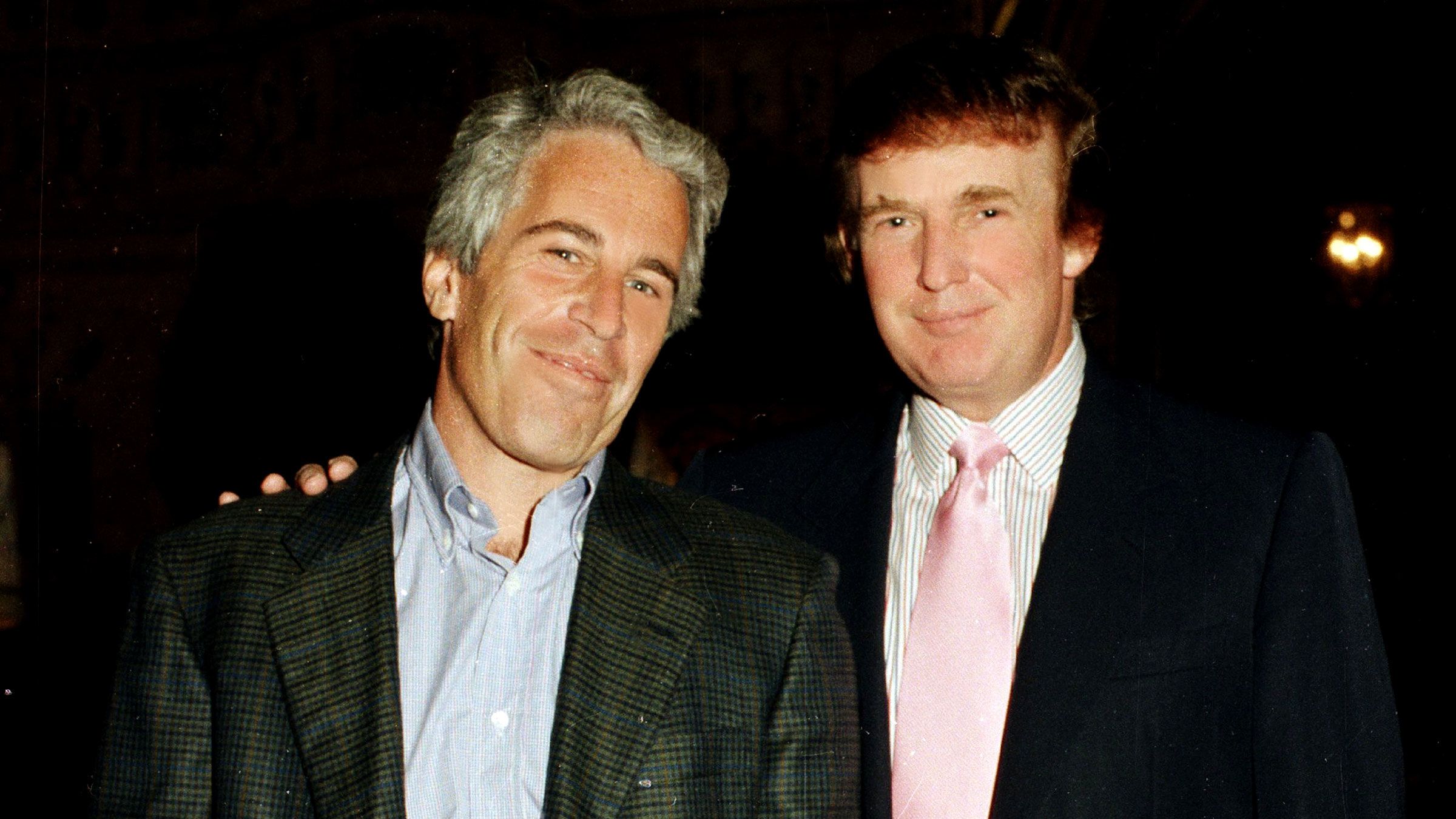In the murky annals of American scandal, few names evoke a cocktail of revulsion, intrigue, and unanswered questions quite like Jeffrey Epstein. The financier turned convicted sex offender, whose 2019 suicide in a Manhattan jail cell only amplified the conspiracy theories swirling around his elite web of enablers, has long been a specter haunting the corridors of power. But as President Donald Trump edges toward signing a landmark bill to unseal thousands of Epstein-related documents, a fresh, visceral allegation from one of his victims has thrust the predator’s most intimate grotesquery into the spotlight. Rina Oh, a survivor of Epstein’s predatory grooming, has come forward with a harrowing claim: the billionaire’s genitals were “extremely deformed”—a twisted, lemon-shaped appendage, barely two inches when erect, that she believes fueled his insatiable, sadistic appetites. This bombshell, dropped amid the legislative push for transparency, reopens wounds for dozens of victims while casting a glaring light on the high-society figures—politicians, royals, and moguls—who partied in Epstein’s orbit, oblivious or complicit in the horrors unfolding below deck.

Epstein’s empire of exploitation was no accident of opportunity; it was a meticulously engineered machine of manipulation, built on private jets, island retreats, and a Rolodex of the world’s most influential. Born in 1953 in Brooklyn to a modest Jewish family, Epstein clawed his way from a teaching gig at the elite Dalton School to the rarified air of Wall Street, where he dazzled clients like Les Wexner of Victoria’s Secret fame with promises of financial wizardry. By the 1990s, he was ensconced in a Palm Beach mansion, a New York townhouse that rivaled museums in opulence, and his crown jewel: Little St. James, the 72-acre Caribbean island dubbed “Pedophile Paradise” by locals who witnessed young girls ferried ashore like contraband. Epstein’s modus operandi was chillingly efficient—recruit vulnerable teens through a network of “massage” recruiters, many themselves underage, plying them with cash, clothes, and the illusion of upward mobility. Ghislaine Maxwell, his onetime girlfriend and chief procurer, orchestrated the operation with the precision of a society hostess, masking depravity as decadent hospitality.
The first cracks appeared in 2005, when Palm Beach police raided Epstein’s Florida estate, uncovering a trove of evidence: massage tables stained with evidence of assault, hidden cameras in bathrooms, and flight logs from his “Lolita Express” Boeing 727 jet, which ferried celebrities like Bill Clinton, Prince Andrew, and a pre-presidential Trump to his private domain. Epstein pleaded guilty in 2008 to state charges of soliciting prostitution from a minor, netting a sweetheart deal—13 months in a county jail with work-release privileges that allowed daytime jaunts to his office. Critics decried it as a miscarriage of justice, orchestrated by Epstein’s army of lawyers, including a young Alan Dershowitz, who would later face his own Epstein entanglements. Federal charges loomed in 2019, but Epstein’s death—ruled a suicide by hanging, though autopsy anomalies sparked murder theories—left a vacuum filled by civil suits, Maxwell’s 2021 conviction on trafficking charges, and a slow drip of unsealed documents revealing the breadth of his network.
Enter Rina Oh, whose story adds a layer of raw, anatomical horror to Epstein’s legacy. Now in her forties, Oh was a 22-year-old aspiring artist in 2000 when Epstein and Maxwell lured her into their vortex. Posing as patrons of the arts, they dangled promises of mentorship and funding for her studies at the New York Academy of Art. “They pretended to take an interest in my work,” Oh recounted in a candid Substack interview with media veteran Tina Brown, her voice steady but laced with the tremor of revisited trauma. What began as gallery chats escalated to invitations for “private viewings” at Epstein’s Upper East Side lair, where the air hung heavy with the scent of opulence and unspoken threats. Oh’s first encounter unfolded in the infamous “red room”—a chamber draped in crimson velvet, equipped with restraints and an aura of ritualistic menace. There, alongside a female accomplice (whom Oh suspects was another victim, now claiming amnesia), she was coerced into acts that blurred consent and coercion.
But it was Epstein’s physicality that seared itself into Oh’s psyche, a detail she has guarded until now, believing it unlocks the psychology behind his predations. “He had an extremely deformed penis,” she stated flatly, the words landing like a gut punch. Describing it as “shaped like a lemon—really small when fully erect, probably like two inches,” Oh speculated that this congenital anomaly bred profound insecurity, manifesting in a compulsion to dominate and degrade. “Some people have described it as egg-shaped or oval, thick at the bottom but thin and small at the head,” she continued, echoing whispers from earlier investigations. In Epstein’s world, vulnerability was weaponized; what he lacked in anatomy, he compensated for with power plays—demanding oral acts he dubbed “the lemon treatment,” a grotesque ritual where victims were instructed to suck on citrus fruits as a prelude to servicing him. Oh theorized this fixation stemmed from a deeper shame, perhaps Peyronie’s disease or a botched procedure, driving him to orchestrate orgies not for pleasure, but for validation. “He needed constant gratification because he couldn’t get it otherwise,” she said. “It was his way of proving he was still a man, even if his body betrayed him.”
This revelation isn’t mere tabloid fodder; it resurrects a thread from Epstein’s 2009 civil deposition, where his lawyer Jack Goldberger erupted in fury as victims’ attorney Michael Kuvin pressed the point. “Is it true, sir, that you have what is described as an egg-shaped penis?” Kuvin inquired, citing police affidavits from Palm Beach probes. Epstein, red-faced and mic in hand, stammered denials before his counsel halted proceedings, snarling, “If you continue with this type of question, I will adjourn the deposition immediately.” The exchange, resurfaced in viral clips this week, captures Epstein’s unraveling—a man whose facade of invincibility cracked under scrutiny of his most private inadequacy. For Oh and others, it’s validation: Epstein’s crimes weren’t abstract perversions but rooted in a personal hell that he inflicted on the innocent to exorcise.
Timing, as they say, is everything. Oh’s interview dropped like a thunderclap on November 19, 2025—the same day the U.S. House of Representatives voted 421-1 to pass the Epstein Transparency Act, a bipartisan juggernaut mandating the Department of Justice release all remaining files on the case. Spearheaded by Rep. Robert Garcia (D-CA) and backed by a chorus of survivors, the bill compels the unsealing of over 100,000 documents and 300 gigabytes of evidence, including unredacted flight logs, victim testimonies, and communications that could ensnare lingering figures in Epstein’s shadow. The lone dissenter? Rep. Matt Gaetz (R-FL), whose own scandals have long danced on the periphery of Epstein lore. The measure now hurtles toward the Senate, where passage is all but assured, landing on Trump’s desk by week’s end.
Trump’s role here is a masterstroke of political jujitsu. Once Epstein’s Mar-a-Lago chum—photographed yukking it up in 2000, Trump quipping to New York Magazine that Epstein was a “terrific guy” who liked ’em “on the younger side”—the president has since pivoted to vehement disavowal. Banned from Mar-a-Lago after allegedly hitting on an underage girl (per Epstein’s brother), Trump claims he severed ties post-2004 and tipped off authorities to Epstein’s predations. In a Truth Social rant on November 17, he exhorted House Republicans: “We have nothing to hide, and it’s time to move on from this Democrat Hoax… perpetrated by Radical Left Lunatics.” Yet, freshly released emails from Epstein’s estate, dropped by House Democrats on the same day as the vote, complicate the narrative. In one 2008 missive to staffers, Epstein fumed: “I want you to realize that that dog that hasn’t barked is Trump… VICTIM spent hours at my house with him, he has never once been mentioned.” The “victim,” per GOP clarifications, was Virginia Giuffre, the 16-year-old recruited by Maxwell who later died in 2025 after years of advocacy. Epstein alleged Trump “knew about the girls,” a barb that White House press secretary Karoline Leavitt dismissed as “fake narrative” from “selectively leaked” docs.
For Trump, signing the bill is low-risk theater: it burnishes his “drain the swamp” cred, deflects from his own Epstein adjacency (flight logs show seven Lolita Express jaunts pre-2000), and potentially buries Democrats under Clinton’s 26 logged flights. But survivors like Oh see it as overdue reckoning. “The truth is finally going to come out,” she told Brown, her words a rallying cry echoed by Giuffre’s estate and groups like the Epstein Victims’ Compensation Program, which has disbursed over $150 million since 2021. The files promise revelations: unfiltered Maxwell trial exhibits, FBI surveillance tapes from Little St. James, and perhaps the elusive “black book” of contacts, rumored to list 1,500 names from Hollywood to Whitehall.
Broader ripples threaten to swamp the powerful. Prince Andrew, already stripped of titles, faces fresh scrutiny over Giuffre’s settled suit; Bill Clinton’s denials strain under the weight of island visitor logs; even tech titans like Bill Gates, who met Epstein post-conviction, squirm under association. Oh’s disclosure, meanwhile, humanizes the inhuman—reminding that monsters are forged in frailty, their empires built on the broken bodies of the young. “He brainwashed me into thinking it was normal,” she reflected, “but now, with these files coming, no more hiding.”
As Thanksgiving dawns on November 20, 2025, Titusville’s chill can’t match the cold dread settling over Epstein’s enablers. Trump’s pen hovers, a guillotine for secrets long buried. For Rina Oh, it’s catharsis amid carnage: a deformed legacy laid bare, one unsealed page at a time. In the end, Epstein’s true deformity wasn’t anatomical, but moral—a void that devoured innocents, now poised for the light it so desperately evaded.




